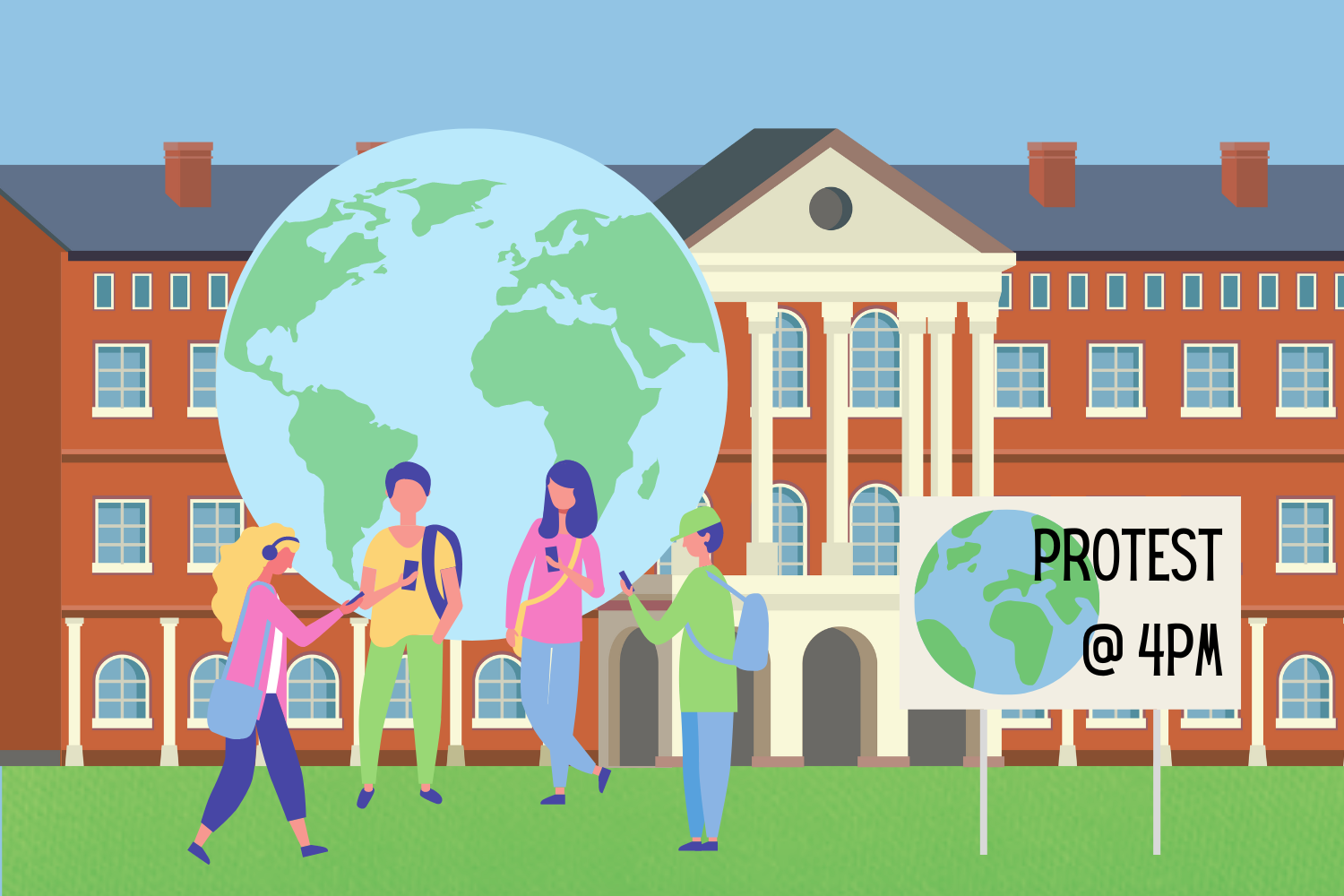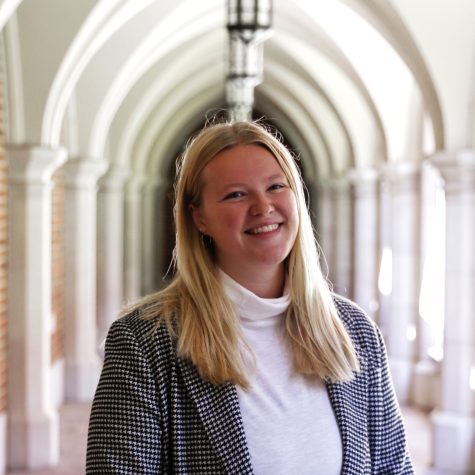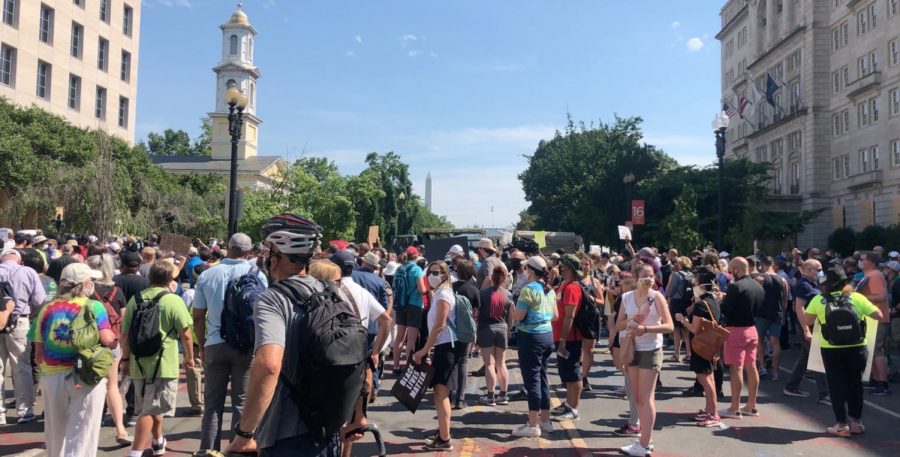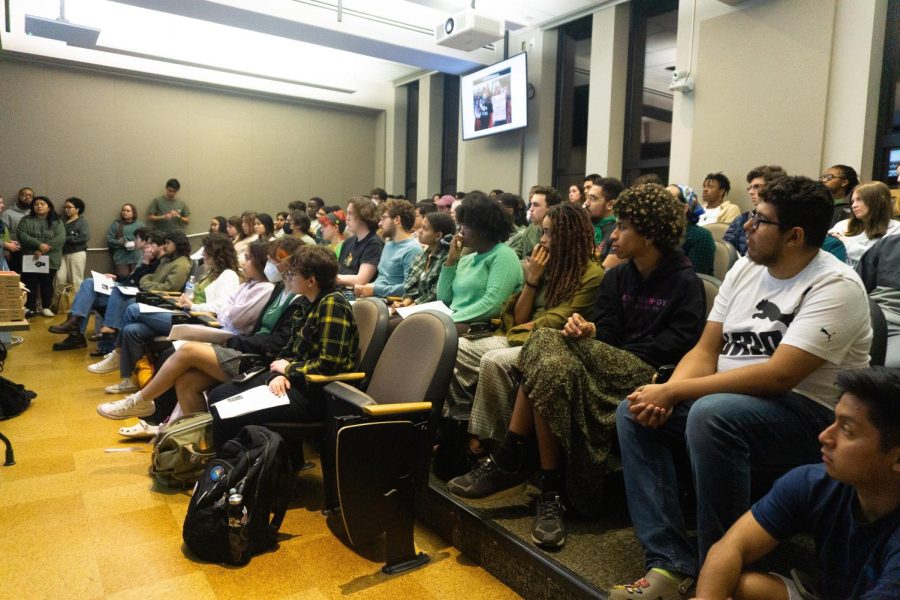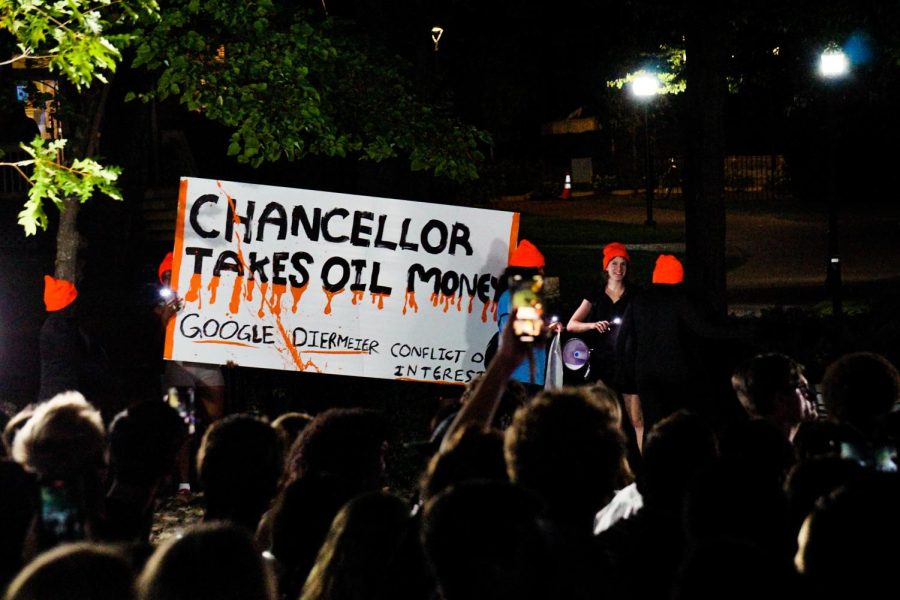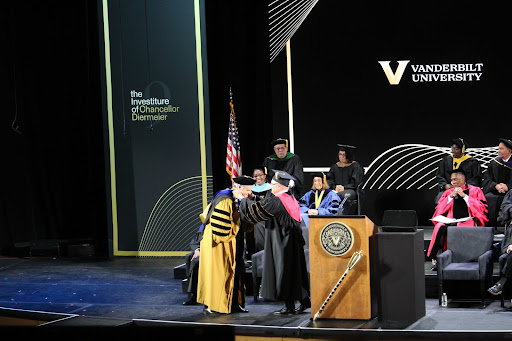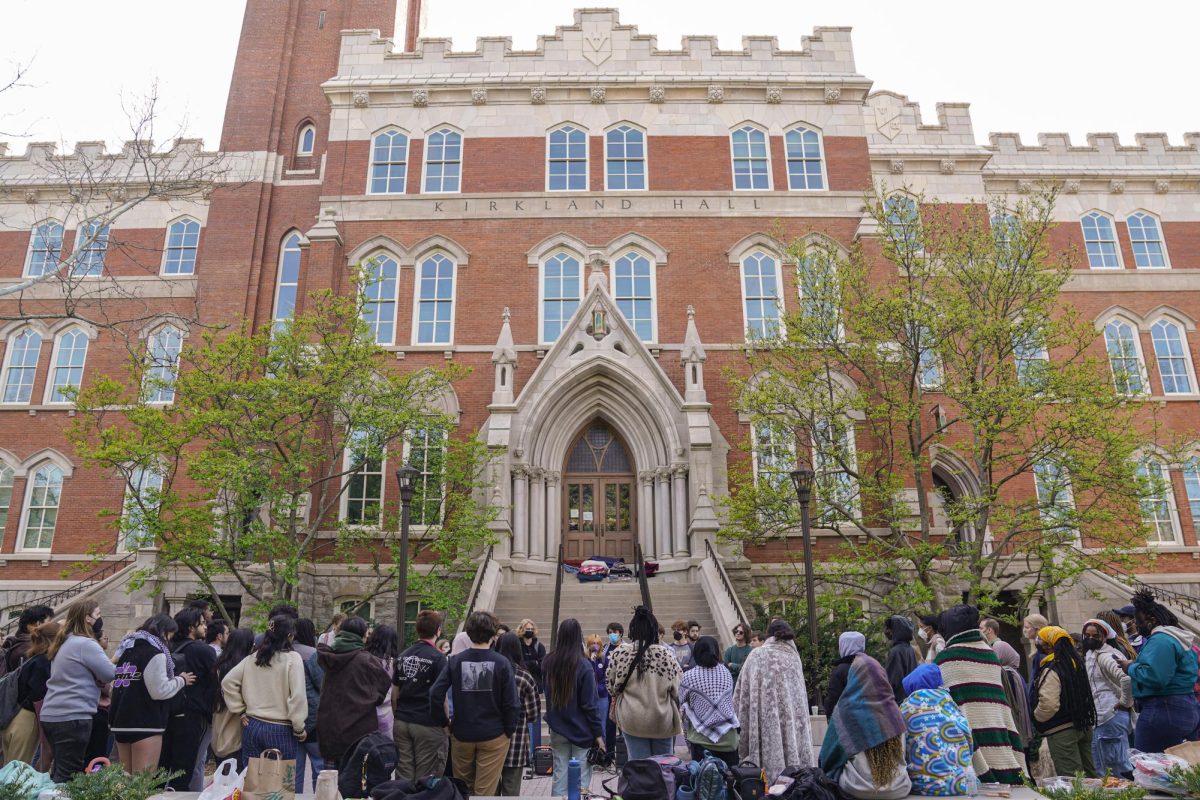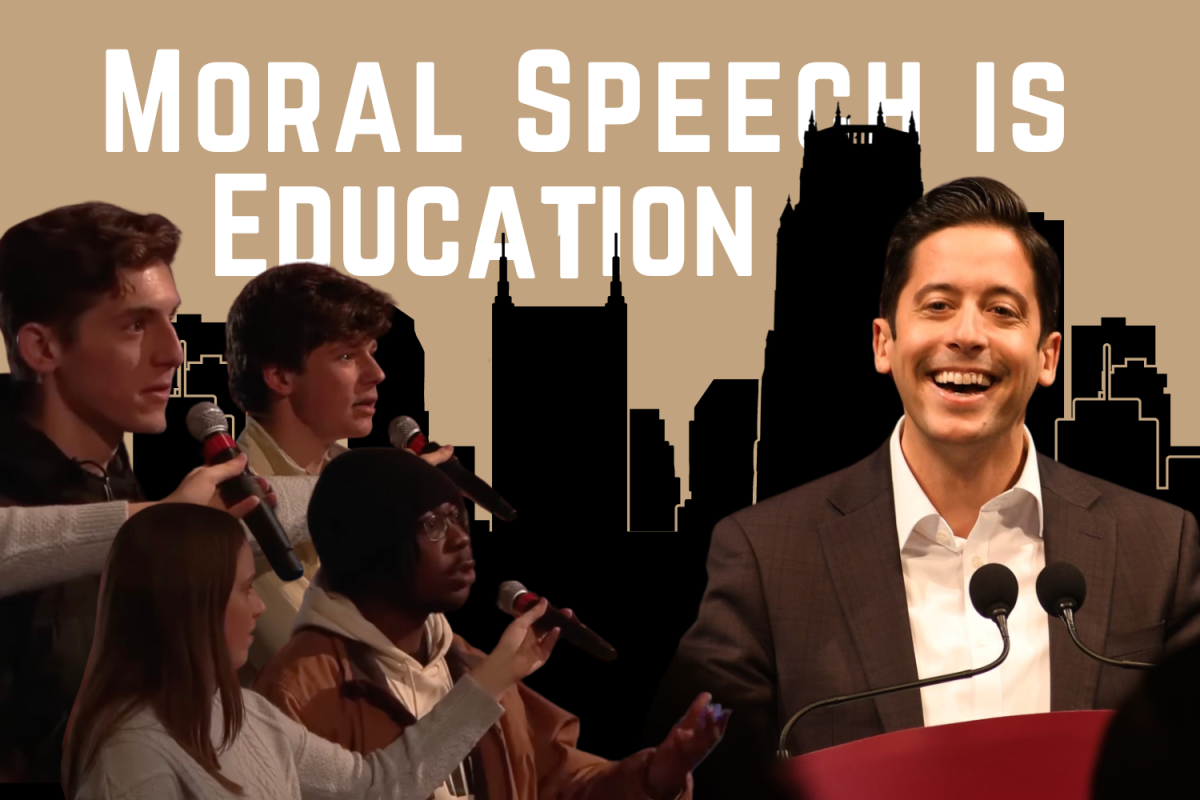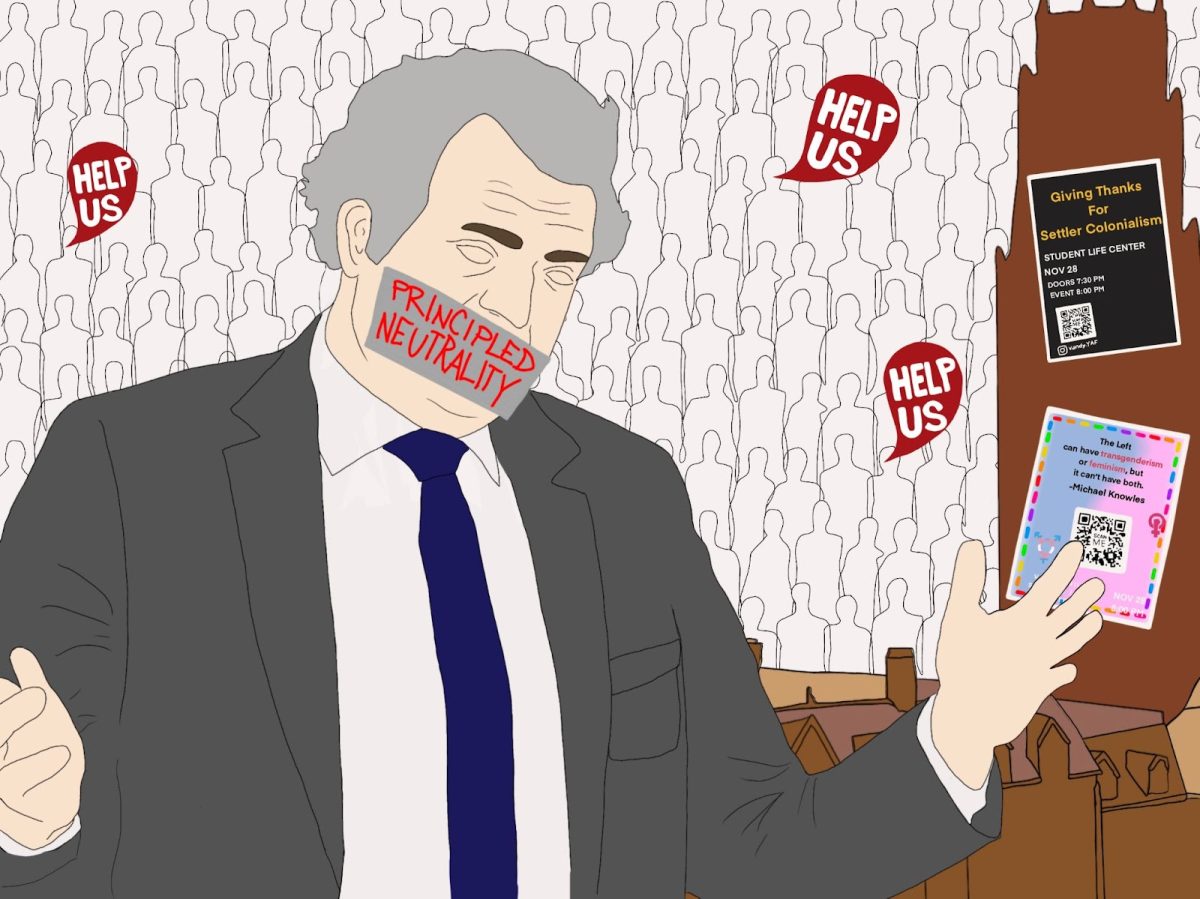If you’ve ever listened to conservative pundits, you’d think that all of today’s college campuses—Vanderbilt included—are bastions of left-wing revolutionary activity. While our generation is often labeled as politically active, the reality is that college campuses have always been sites of culture wars.
The protests of today don’t match the force of those of our parents’ generation, though. In the 1960s and ‘70s, college students were at the forefront of political battles. The student-led anti-war movement in particular saw lock-ins, occupations of administrative buildings, strikes and mass student participation. Today’s college students report feeling that they face looming existential threats—racism, climate change, gun violence, the Dobbs decision—that inspire them to act. Much of our political action, however, tends to play out on social media or among small and orderly groups of students. We just don’t see the large-scale, disruptive protests we associate with the 1960s anymore.
This isn’t to say that there aren’t Vanderbilt students working hard to change things, and many of us have witnessed and participated in important protests on this campus. Rather, I would like to investigate why contemporary campus protests across the country appear to be less disruptive than those of our predecessors.
An op-ed by Jack Kubinec in the Cornell Daily Sun argues that the post-2008 economic landscape has increased the value of a college degree, suppressing dissent and terrifying students into toeing the line. As a result, many students focus more on their GPAs and less on social justice than they did in the past. Furthermore, in our highly documented world, students regularly express fear that their actions will appear on social media and follow them, impeding their graduate program admissions chances or job prospects. Kubinec further suggests that the rise in STEM majors as opposed to humanities majors—which he notes is often motivated by economic concerns—has informed the decline in protest: “Debugging code probably spawns fewer rebels than reading Karl Marx would.”
Another key difference between our generation and students in the 1970s is that college education has become much more accessible to first-generation college students, minorities and low-income students, thus increasing a college degree’s efficacy as a tool of social mobility.
It is often the most marginalized students—those with the most to lose from disciplinary consequences—who organize protests and resistance. Racial justice protests are largely organized by students of color, and the recent criticism of allegations against VUMC transgender clinic was largely led by LGBTQ+ students.
It seems a given that young people will protest, but privileged students—wealthy, white and connected—are better able to get away with subversive activity than marginalized groups. They have the money to pay fines and are more likely to be let off with a warning by police viewing their behavior as the product of youthful exuberance rather than criminal intent. Although racial disparities in the criminal justice system make it so that minority students are not comfortably able to engage in active protest, it is often the most marginalized students—those with the most to lose from disciplinary consequences—who organize protests and resistance. Racial justice protests are largely organized by students of color, and the recent criticism of allegations against VUMC transgender clinic was largely led by LGBTQ+ students.
Vanderbilt itself has seen racial disparities in its treatment of protesters. In 1960, the Divinity School expelled Reverend James Lawson for his role in organizing civil rights resistance. His civil disobedience, inspired by Martin Luther King Jr. and Gandhi, eventually led to his arrest. Lawson and the school later reconciled, but it took until 1996—over three decades after the Civil Rights Act was passed. In 2021, Vanderbilt honored him by launching the James Lawson Institute for the Research and Study of Nonviolent Movements at Vanderbilt University.
Students lacking socioeconomic privilege are often unable to pay fines or access adequate legal counsel to address any criminal consequences of protesting. Many low-income students at Vanderbilt are also on scholarships, which are contingent on remaining in good standing with the university. Faced with potential repercussions from the university, graduate school admissions or future employers, these students may feel that it’s not worth the risk. Academic or disciplinary probation can also affect your future; if students face disciplinary action, and it appears on their permanent records, their future career or educational prospects may be hindered. Marginalized students may not be given a second chance, and if they are expelled, they may have no safety net. Wealthy students, with huge safety nets, can afford to take risks or disrupt. But will they?
While American universities themselves engaged in mass and sometimes violent protests throughout the anti-war movement, Vanderbilt was fairly tame. According to Laura L. Grove’s (‘18) research article titled “Vanderbilt and the Vietnam Crisis,” most Vanderbilt students from the 1960s “came from white, southern, conservative, affluent families, and thus unsurprisingly most favored the war.” By 1968, as tensions escalated, “the liberal minority made their voices heard,” organizing debates and “teach-ins.” These students were dominant “because conservative students’ interest in the subject remained on the surface level.” Today’s Vanderbilt is considerably less monolithic, and students from all backgrounds and political affiliations identify as politically active. But are we willing to engage beyond the surface level?
This isn’t just a Vanderbilt question—we rarely see headlines about truly disruptive campus protests anywhere.
One of the most successful campus protests to make national news recently was at New York University. It didn’t feature students locking themselves in buildings or risking arrest. Rather, it saw students gather 80 signatures from a class of 350 students to challenge an organic chemistry professor’s allegedly unfair grading standards. The students’ complaints ultimately resulted in Jones’s firing. This response sparked outcry over NYU’s decision to give into its students’ demands—some feel universities care more about satisfying consumer demands than educating resilient and competent students—while others have echoed the students’ concerns about weed-out classes. The point is, it worked, and students organized. But we should not overlook that the most successful student protest in recent memory had to do with student GPAs, not racism, climate change, homophobia, transphobia, gun violence or abortion access.
Last year, when Black and Indigenous students simply put up a sign on campus calling for racial justice, the administration removed the sign because it apparently violated Vanderbilt’s sign policy. Similarly, this year, Dores Divest protestors were detained and had an altercation with VUPD and the Office of Student Accountability for violations of free expression guidelines. If even these peaceful, hardly-rebellious activities are met with administrative pushback, it’s understandable that students are reluctant to take their protests further. Following the imposition of these guidelines, I have been involved in demonstrations where organizers refrain from holding up protest signs around tour groups, for example, out of fear of administrative retribution.
We should not overlook that the most successful student protest in recent memory had to do with student GPAs, not racism, climate change, homophobia, transphobia, gun violence or abortion access.
Student protests legitimize the voice of a new generation. Institutions that claim to value students should listen to them; ignoring those voices exposes the hypocrisy of the very institution that preaches learning. History has shown that student protests can affect change, from Tinker v. Des Moines (1969), a student protest that went all the way to the Supreme Court and set legal precedent for students’ free speech, to protests inspired by W.E.B. Dubois in our own backyard at Fisk University in the 1920s, which laid the groundwork for later civil rights. Instilling the desire for change, encouraging the development of civic responsibility in students and forming engaged adults are the duties of an institution of higher learning. Vanderbilt’s community creed claims the school is an environment where students can be “courageous, acting with bold authenticity,” that embraces “taking risks, challenging assumptions, and persevering in the face of adversity.” The university’s restrictive free-expression guidelines undercut these commendable aims.
Our generation reports feeling disillusioned and hopeless, yet we are constantly labeled by the media—and by ourselves—as changemakers. This label has the potential to galvanize us to make the world better, but we have to reflect on whether or not we live up to it. If the situation at NYU indicates that universities will only listen to consumer demands, then wealthy students must reject the “surface level engagement” of Vanderbilt’s past and use their social capital for good. NYU students proved that universities can listen and students can effect change, but both universities and students need to ask themselves what kind of change they want to make. Our generation is not a monolith: different life experiences and varying levels of privilege produce diverse responses to injustice. Students and administrators alike must reflect on our collective complacency and ask whether there is more we can do to bring meaningful change.



